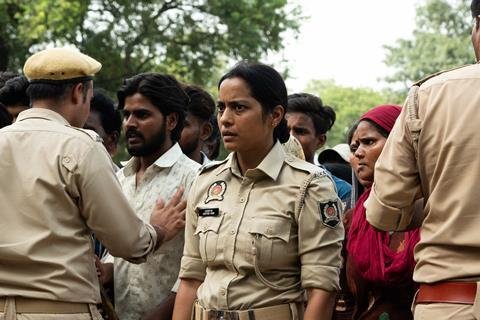
“Santosh” is a movie that is often intellectually challenging and not deeply emotional, but it shows the darkest part of modern Indian communalism. This story is about a young Hindu widow who takes over her husband’s job as police constable under a government program. While it may sound like a feminist tale of empowerment, the film also asks what power means in a highly stratified society where an unsolved crime sets off explosive clashes over religious and caste identities.
The movie deflates such fantasies about law enforcement powers systematically: from their compatibility with contemporary notions about gender equality right down into how closely they follow lines demarcated according to Hindu majoritarianism residing at upper-caste dominated levels within Indian society today vis-a-vis Santosh’s need for recognition on par all colleagues working alongside her wearing a same uniform which does not only facilitate this but also brings along moral policing young couples or public shaming poor accused persons through private torturing them till confession obtained (another staple image found in mainstream Bollywood). We laugh as Santosh learns ropes at her local police station, but Goswami’s silent reactions sell us on the increasing complexity of those situations as our protagonist gets ever more entangled within them whilst still being outside looking in terms of their language groups secrets corrupt practices etc around stations like these.
When a Dalit girl from “lower caste” is murdered and the media accuses her precinct of ignoring it first then treating victim’s body with disrespect leading to further protests Inspector Geeta Sharma (Sunita Rajwar) comes in as an experienced and well-spoken officer who takes charge over investigation. She acts as mentor for Santosh throughout this time even though seems like there might be hidden agendas behind some actions she takes pushing widow towards self-realization which turns out cathartic only at personal level but has negative consequences affecting outcome of case.
When she speaks to people of oppressed castes and later Muslim characters, whom she starts suspecting, as she follows a lead on a Muslim suspect, her self-confidence as an upper-caste middle-class Indian woman turns into belligerence and trickle-down entitlement. The movie’s text is guilty of the same sanctimony that can be found in many Indian crime stories today where might is right for the police. However, it is this underpinning beneath the façade brought out by Goswami’s and Rajwar’s performances through delicate shifts that lays bare different facets (sometimes chilling) about justice in India which are transient or based on condition; just like the policing style does with casteism depending on who shares screen space with them – another religion or socio-economic background?
Suri’s camera never strays far from Santosh but rather sticks beside her always tracking this character around until they eventually explode with rage somewhere before returning back home again then sitting quietly alongside when there seems nothing left except thinking deeply about oneself. It rarely drills below these outer layers showing only what happens outside without delving into why things happen inside; thus making ‘Santosh’ an occasionally alienating film. Yet through doing so it becomes valuable as an educational examination towards common visual representations by compelling viewership into closer inspection as well as deduction on their own part(s) regarding least savory suggestions within caste systems plus Islamophobia often assumed within mainstream India.
For More Movies Visit Putlocker.